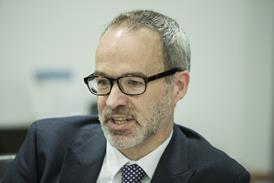New Oxford Hospitals chief reveals delayed transfers turnaround

The chief executive of one of England’s top teaching hospitals has set out how it halved its stubbornly high rate of delayed transfers, after introducing a set of reforms including directly employing social care workers. Bruno Holthof, who joined Oxford University Hospitals in October, also set out his vision for ...
You need to be a subscriber to read more

Subscribe for unlimited access
With a HSJ subscription you’ll unlock:
- All HSJ news by sector, topic & region
- Breaking News announcements
- App for mobile and offline reading
- Comment and Daily Insights newsletters
- Regional roundup newsletters
- Unrestricted access to ‘Ask HSJ’ - AI assistant - AI assistant
- 10 expert briefings every fortnight (Premium only)
Already a subscriber? Sign into your account here




















